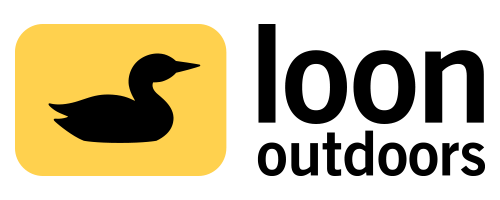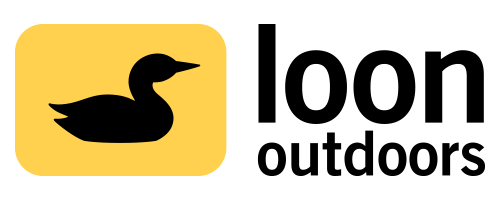Fish For Garbage: Creating Pollution Free Waterways

Intro: Utah is known for its diverse geographical regions and exceptional access to the outdoors. And for having an arid climate and being largely desert, Utah is an endless playground for outdoor enthusiasts seeking mountains, desert–and surprisingly, water. Managed by the Utah Division of Wildlife Resources, there are more than 2,000 lakes and over 89,000 miles of streams. But it goes without saying that ease of access equals increased impact on ecosystems, especially when water is already a limited resource.
What is now the remnants of the prehistoric Lake Bonneville, which at one point covered most of the state, the Great Salt Lake largely creates a unique oasis in the desert. The lake not only provides habitat for wildlife and millions of migrating birds, but its future health is paramount to access to drinking water and Utah living up to its nickname of “Greatest Snow on Earth”.

Three major rivers feed the Great Salt Lake—the Bear, Weber, and Jordan Rivers. The Jordan River alone flows through 15 municipalities, roughly a population of over 1 million, and multiple state and federal agencies share management responsibilities. And Utah’s staggering growth rate continues to put additional pressure on water resources, with a 15.1% jump in Salt Lake County in the past year.
More people equals more impact, and unfortunately, more trash in waterways. Stewardship is the name of the game here. But the truth is that public campaigns and policy efforts to conserve water only go so far without an accompanying educational component. This goes to say, education and awareness have the power to help people truly understand why taking care of watershed ecosystems matter and how to effectively do so. And once people care, mobilization and long-term stewardship can become the standard
The Organization: Here’s where Fish for Garbage comes in. Originally formed in 2014 by a group of anglers and outdoor enthusiasts, the organization grew out of a mindset to protect our rivers, remove trash from waterways, and inspire the next generation of stewards. A group of friends noticed the increased amount of trash in and along riverbanks and shorelines. Instead of continuing to complain about the eyesore, they created an action plan and inspired others to join in.

What first started as a campaign to ‘fill your net’ as you left a fishing destination quickly grew into organized cleanups. The organization began seeking out recreation and destination hot spots to clean up areas that have a high concentration of trash. Five years later, Fish for Garbage was incorporated as a nonprofit to expand cleanups and introduce a watershed education program for youth.
A Collaborative Approach: From tagging locations on social media to the overexploitation of Utah’s natural landscape through corporate marketing, waterways and their ecosystems have experienced great strains and unfortunately an increase in accumulated and dispersed trash.
But with great challenges can come great opportunities, so let’s talk cleanups. Fish for Garbage emphasizes collaboration and partners are integral. The organization strives to forge partnerships with people who manage and use waterways. From public to private partnerships, Fish for Garbage intentionally involves groups and individuals in a collective effort to make a lasting impact. For every location the organization chooses to host a cleanup, an emphasis is placed on forging partnerships with waterway managers, users, and public and private organizations who operate in the local watershed. By emphasizing collaboration over competition, Fish for Garbage aims to be an organization that brings people together for the cause.

And of course, volunteers make the organizational efforts come to life. Fish for Garbage is intentional about building a culture that defines the type of organization it strives to be—responsible, inclusive, and dedicated. The Fish for Garbage community continues to grow year by year, and the organization remains committed to becoming more representative of the larger communities in which it operates.
Since 2014, the organization has pulled 50,000 pounds out of five major waterways in Utah and had a steady increase in volunteer turnout, pounds of trash collected, and new partnerships. After taking a year off of cleanups, the organization hosted the annual Provo River cleanup at the beginning of 2021 and removed 13,000 pounds of trash with over 400 volunteers in three hours—a true testament to the need for ongoing awareness and mobilization.

Fish for Garbage combines awareness, education, and action to create long-term change and challenge “the way things are” with immediate solutions. The cleanups provide direct service opportunities to engage communities in participatory action and emphasize that everyone has a role to play.
The Role of Education: Awareness is important, but education has the power to drive understanding and a lifetime of commitments to the cause. So to take it a step further, the organization developed a hands-on education program designed to help youth learn about the health and importance of watershed ecology, as well as provide informal education opportunities in the outdoors that tie into Utah science core curriculum in the classroom.

Fish for Garbage seeks to create a legacy of clean waterways and approach education through a bioregional lens rooted in experiential learning. This is a fancy way of saying that through place-based learning, youth have the opportunity to connect with their physical and environmental surroundings and learn what’s happening in their own backyard.
In science class, Utah fourth graders learn the water cycle, the importance of the watershed, habitat, and basic ecosystem functions. Fish for Garbage takes this theoretical learning and gives students an opportunity to experience these concepts in person. The demanding nature of formal education was not designed for discovery, exploration, and self-identity development that kids need to gain through sensory experiences. This type of experiential approach has been proven to validate learning and helps youth develop environmental literacy, understand local ecosystems, learn local history and culture, and understand their responsibility as inhabitants of a bioregion. Fish for Garbage believes that not every child can learn in the classroom, but every child can learn in the outdoors.

What’s Next: Besides hosting waterway cleanups and educational programming, Fish for Garbage actively encourages its community to “fill the net” when leaving fishing destinations and to pick up trash whenever you leave the house. Besides attending a cleanup event, the organization emphasizes that everyone can make a difference every time you leave the house, go to the park, or walk through a parking lot—because the collective impact is what is needed to truly make large-scale change.
To learn more, visit www.fishforgarbage.org



